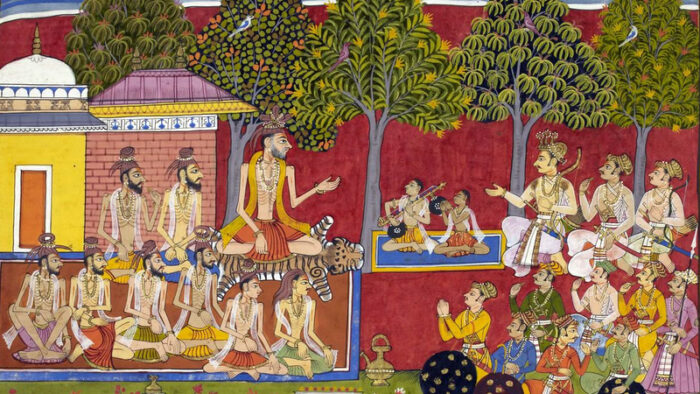The Center for Soft Power in collaboration with Udupa Foundation wishes all our friends a very happy World Music Day. We are thrilled to announce the results of the Soundscapes of the Ramayana on June 21st, which is dedicated to both music and Yoga. We thank mridangam Vidwan Shri K U Jayachandra Rao and Udupa Foundation's Founder Ghatam vidwan Giridhar Udupa for judging the competition.
Winners Seniors
Sowmyashree and Radha (Sowrabha): First Prize
Video: https://youtu.be/LD8SGaNDAsc
Explanation of choice of music: Gamaka is Karnataka’s traditional art of presenting a literary work (poetry) with a balanced mix of music, lyrics and drama. In the rendering of the work in Gamaka Art form, recitation and commentary go hand in hand. As the subject for this competition is the great epic Ramayana, we have chosen the Gamaka art form as Lava and Kusha are believed to be pioneers in Gamaka art.
Judge’s Comment: Gamaka Art is very rarely practised now days. It is a matter of gratification that these young participants have made a laudable attempt in presenting their theme in this form. Both singing and commentary are true to the theme and ably presented.
Chaitrika S, Ist Prize (Shared)
Video: https://youtu.be/38E9DzZXusA
She has presented an extract of the 73rd Sarga of Srimad Valmiki Ramayanam's Balakanda. She has sung the shlokas 24th to 29th in Ragamalika, set to Mishra nade, which describes the royal wedding of Sri Rama and Sita. In the second half, I've presented my own composition in the raga Ramapriya set to Aditala, inspired by the whole of Balakanda of the Ramayana. My composition describes Sri Rama as the son of Dasharatha, the destroyer of Ravana, the protector of people from all ten directions, the one with the face of moon, the charm of Ravikula, the beloved brother of Lakshmana, the vanquisher of Parashurama's pride and the one who resides in the heart of Sita (Ramapriyaa) and humbly bows to him. While pallavi is an introductory part, the anupallavi and charana are based on the events of Balakanda.
Judges comment: Ms Chaitrika has chosen to present Seetha Kalyana of Balakanda as slokas in Ragamalika in the first half, and in the second half, her own composition in raga Ramapriya, describing Rama’s exploits. Rendering of slokas as well as her own krithi is sruthi shuddha and pleasant.
Sumukh Karanth: IInd Prize
Video: https://youtu.be/3S0feANL8yc
Shri Sumukh has composed and rendered a pallavi “Kausalya Raama Pattabhirama Paalita-sura Hanuma Priya” in Mishra chapu tala which is of 3.5 aksharas.
Two avarthanams of this tala is 7 aksharas signifying 7 kandas of Valmiki Ramayana and 4 avarthanams will be 14 aksharas, signifying 14 years of vanvas adhered to by Lord Raama.
The essence of the above pallavi is Shree Rama who would have been coronated as Prince of Ayodhya, goes to 14 years of vanvas, just to keep his father’s words given to Kaikeyi. Shree Raama later liberated Jaya and Vijaya from their evil forms with the help of his dearest devotee Hanuman and at the end of vanvas, was crowned as Ayodhydipati.
This Pallavi is followed by thani avarthanam Thani Avarthanam begins with chaturasra nade with some mel-kala mukthayas and kanaks which signifies various events in the life of Shree Raama. This is followed by a khanda nade which signifies roudhra roopa or veerarasa depicting the Yuddha Kaanda.
Thereafter, he has concluded the Soundscapes of Ramayana with some patterns in trishra nade, chaturashra nade, urutu and mohara mukthaya signifying kshema praja paripalana and liberation.
Judges remarks: Shri Karanth presents the theme of Kausalya Rama's exploits from vanavasam in accordance with 'Pitruvakyam' to his ultimate coronation, in pallavi form as well as laya form quite competently.
Juniors:
Shri Achyuth Athreya: (Ist Prize Junior)
Video: https://youtu.be/rPfMyPwbgY0
An attempt of depicting Ramayana using pictures of various short stories along with the flute played in the background which covers the bhava/mood shown in the pictures.
Judges Comment: He has made a unique attempt to present Ramayana Story from birth of Rama to ultimate coronation in vivid pictorial form accompanied by playing the flute in ragas appropriate to each episode.
Sriveda Samhitha (IInd Prize Winner Juniors)
Video: https://youtu.be/TRGmrQ2hDsQ
Slokas in Aranyakanda where Lord Rama is describing a place to Laxmana which is suitable to build their Ashram.
Judge's remarks: She has given a beautiful description of the site in Panchavati on the banks of Godhavari suitable for building ashram as explained by Rama to Laxmana, followed by a sloka and song appropriate to the theme.




